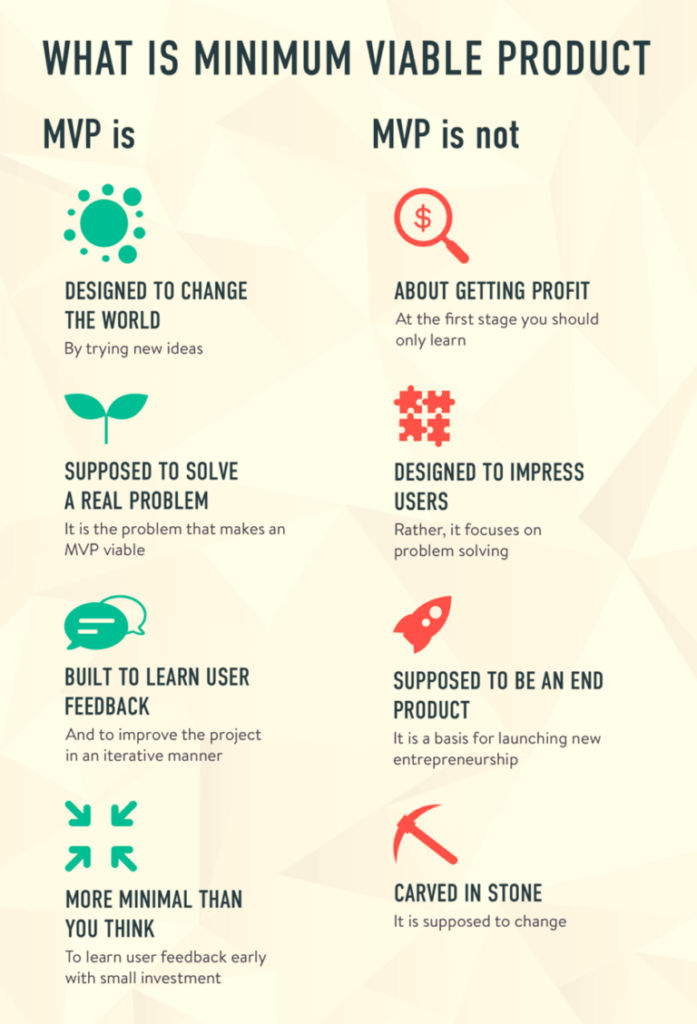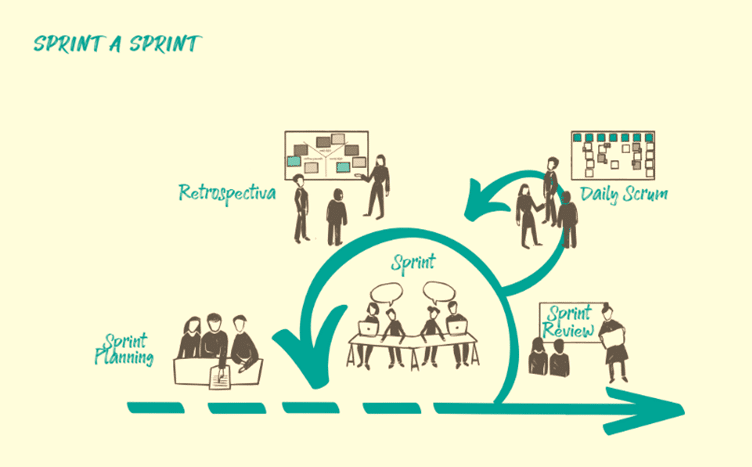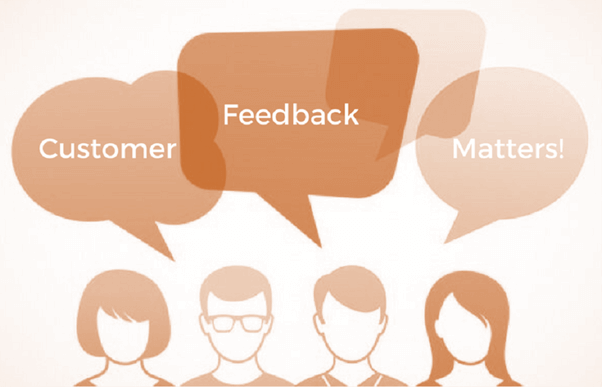Unlock Minimum Viable Product Success via Asking Questions
Nowadays, many companies (especially startups) are connecting with the MVP product development consultant to validate their product ideas. Minimum viable product consultants help clients in knowing about the potential impact their venture can experience with these services.
In reality, users are at the number #1 position behind the success of any project. So, it is important for you to understand the user motivation, their demands and many more attributions. User research and feedback play a crucial role in the development of MVP services for mobile apps.
They help developers validate their product ideas, understand user needs and preferences, and identify potential pain points and areas for improvement. By incorporating user feedback, developers can ensure that their MVP is well-designed and user-friendly which can enhance the chance of success in the market. This article will help you to gain a detailed overview of the importance of user research and feedback in MVP app development services.

Importance of User Research and Feedback
User research and feedback are essential elements in the design and development process of any product or service. They provide valuable insights into the needs and expectations of the target audience. User research helps to identify any potential problems with the product and to understand how it is being used?
Feedback allows companies to refine and improve their offerings based on the experiences and opinions of real users. This helps to ensure that the end product meets the needs and expectations of the target audience, and leads to higher levels of customer satisfaction and loyalty.
User research and feedback play a crucial role in the success of a product or service by helping to shape it into what the users actually want and need. Let’s gain better insights with the help of the below example:
For example: Take the case of the redesign of a popular smartphone. The company conducted extensive user research and gathered feedback from focus groups and surveys. They found that their users were having trouble navigating the phone’s interface and that the battery life was not meeting their needs.
Based on this feedback, the company made changes to the interface to make it more user-friendly and implemented new battery-saving technologies. The result? The redesigned smartphone received higher ratings from users and was a huge commercial success, selling millions of units worldwide.
Note: According to a study by the Nielsen Norman Group, companies that conduct user research and incorporate user feedback into their design process have a higher chance of creating successful products, with an average return on investment of 2 to 10 times the initial cost.
The Primary Difference Between Minimum Viable Customer Feedback (MVCF) from Regular Feedback

Minimum Viable Customer Feedback (MVCF) and regular feedback differ in terms of their purpose and the type of information they aim to gather. Regular feedback is the feedback that is collected from customers or users at any stage of the product or service development process.
It can provide valuable insights into the overall experience and satisfaction with the product, as well as suggestions for improvements. On the other hand, MVCF is a specific type of feedback that is focused on gathering feedback from a minimum viable number of customers to validate key assumptions about a product idea before investing significant time and resources into its development.
Things you should know while Developing your Minimum Viable Product
The goal of MVCF is to quickly and inexpensively validate whether the product idea has potential and to identify any key areas that need improvement before moving forward with development.
Distinguish Between Regular Feedback and MVCF
| MVCF | Regular Feedback | Example | |
| Time Factor | MVCF is typically collected early on in the development process. | It can be collected at any stage of development | A startup may conduct MVCF before building a full product to validate its viability, while regular feedback might be collected from beta testers or customers once the product is released. |
| Methodology | MVCF is often collected through methods such as surveys, interviews, or prototypes. | Regular feedback can be gathered through a variety of methods such as online reviews, customer service interactions, or product usage data. | A new food delivery app wants to validate its viability before investing significant time and resources into development. To gather MVCF, the company conducts in-person interviews with 20 potential customers to understand their needs and expectations. In this example – it will be suitable for the company to keep the size sample low and to collect feedback from the “survey method”. |
| Focus | It focuses on gathering feedback on specific, high-level assumptions about the product or service. | Regular feedback can be more comprehensive, gathering feedback on multiple aspects of the product. | For example: in mobile application – Regular feedback will only focus on whether customers would use a new app. However, MVCF feedback focuses on gathering feedback for the app’s design, functionality and user experience. |
| Size of Sample | Generally, there are smaller sample sizes but the sample size can be enhanced or decreased as per the requirement. | It is suitable for collecting feedback from large and diverse groups. | For MVCF, the company conducted interviews with 20 potential customers. This small sample size allowed them to validate key assumptions about the product with a minimum viable number of customers, while still gaining valuable insights. |
Top 10 Questions to Ask from Users for Taking their Feedback

MVP process emphasizes specifically the user’s motivation and their reaction by asking relevant questions to the topics. So, to maintain clarity in the discussion we are selecting 5 foremost minimum viable product categories and questions:
1: Category – Fitness Application
| Question(A) | What motivated you to start using the fitness application? Have you been able to achieve your fitness goals with the app? |
| Question(B) | Have you used the app’s social features, such as sharing your progress or connecting with friends? How has this impacted your fitness experience? |
| Question(C) | Would you be interested in trying the full version of this fitness application once it is available? |
| Question(D) | How easy or difficult was it to understand how to use the fitness application? |
| Question(E) | What improvements would you suggest to make this fitness application more appealing to you? |
2: Category – Meditation & Well-Being Application
| Question(A) | How have you found using the Meditation & Well-Being application to be different from other stress management or mindfulness tools you may have tried in the past? |
| Question(B) | What can be improved in terms of product search and navigation? |
| Question(C) | Can you describe the impact the Meditation & Well-Being application has had on your overall well-being, both physically and mentally? |
| Question(D) | How easy was it for you to find and purchase the products you were looking for? |
| Question(E) | Have you set any personal goals for your meditation and well-being practice using the app? If so, have you been able to achieve them? |
3: Category – Travel Application
| Question(A) | On a scale of 1-10, how engaging was your experience using the travel application? |
| Question(B) | Was it easy for you to find and book vehicles by using the application? |
| Question(C) | Were there any parts of the travel application that particularly caught your attention and kept you engaged? |
| Question(D) | What do you think sets this travel application apart from others you’ve used? |
| Question(E) | How have you customized the application to fit your individual travel preferences and needs? |
4: Category – Financial Management App
| Question(A) | Was the budgeting feature in the finance application helpful in managing your finances? |
| Question(B) | How can the budgeting feature be improved to better meet your needs? |
| Question(C) | Were you able to easily track your investments using the finance application? Are there any changes you would suggest to make investment tracking more efficient? |
| Question(D) | If you could have one additional feature added to the finance application, what would it be? |
| Question(E) | Were there any parts of the finance application that particularly caught your attention and kept you engaged? |
5: Category – Social Application
| Question(A) | How have you customized your profile and settings to fit your individual preferences? |
| Question(B) | Are there any specific features or elements of the app that you find particularly engaging or enjoyable to use? |
| Question(C) | Have you customized your profile and settings to fit your individual preferences? |
| Question(D) | Does this social application enhance your social networking experience compared to other platforms you may have used in the past? |
| Question(E) | How often do you use the Social application, and why? |
With the above set of questions, you will be able to gain brief insights about your customer’s mindset and usage patterns. If you are struggling for developing MVP models and question sets then you can connect with the MVP app development company.
Pre-subscription and Post-subscription questions
Below are the common questions that can be asked from the customers:
| Pre-Subscription Questions | Post-Subscription Questions |
| What is the primary objective you hope to achieve by using our product? | Was your experience using the MVP what you expected? Were there any unexpected surprises? |
| What worries you the most about using our product? | Are you using the minimum viable product on a regular basis, or have you stopped using it? If you stopped using it, why did you do so? |
| Can you describe the intended usage of our product? | On a scale of 1-10, how satisfied are you with the minimum viable product? What factors influenced your rating? |
Read more: Creating a MVP for Your Mobile App: Best Practices and Tips
Ten Effective Tools to Get Feedback Related to MVP
1. Google Sheets: Conduct user surveys to gather feedback on satisfaction, feature requests, and overall product feedback.
2. Wufoo -Suvey Monkey: It is an online software for building forms. First, you need to create a form, then you can add relevant questions. After completing these steps, you need to pass the link to your targeted audiences and enable the email notification function. Whenever any candidate will fill the survey then you will get the motivation via email.
3. ZohoSurvey: Interview users for in-depth feedback and insights into their experience. This tool will help you to create professional-looking surveys within a minutes and you can even collaborate with your team members on survey projects.
4. Doodle: With the help of this tool, you can schedule meeting with your team members or clients to get detailed feedback from them. Not only this, you can event create new events to connect with your audiences.
5. Crowd signal: if you desire to collect feedback from your audiences through by “pools” then it is a perfect application for you. This tool allows you to create a fascinating poll system even without incorporating much coding experience. This application allows you to track the results of your polls in an effective way.
Things to Remember
- Form focus groups to provide feedback and insights to strengthen your MVP mobile app development process.
- Utilize A/B testing to determine users’ preferred features and functionality.
- Analyze user interaction with analytics tools like Google Analytics and Mix panel.
- Monitor social media mentions with Hootsuite or Brand24.
- Measure customer satisfaction with the Net Promoter Score (NPS).
- Invite real users to test and provide feedback through in-person or remote testing.
- Use in-app feedback forms for real-time feedback directly within the product.
- Track customer inquiries and concerns with customer service feedback.
Read more: Full-Stack Development and the Impact of Cloud Computing
The Final Words
Once, you get the customer feedback then you need to commence a brainstorming session to evaluate the feedback with your team members. Evaluation of the received feedback will help to distinguish that which features need to be improved or which need to be eliminated.
Moreover, At Amplework we offer trusted and reliable services for minimum viable product development to help our clients in validating their ideas, If you are looking for MVP development service provider then connect with us to end your search.


 sales@amplework.com
sales@amplework.com
 (+91) 9636-962-228
(+91) 9636-962-228





